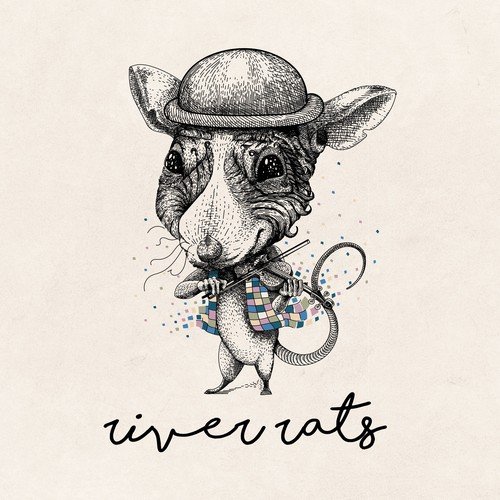
A Modern Guide to Creating Vintage Logos
In a world of sleek minimalism and futuristic branding, many designers and businesses are turning to the past for inspiration. Vintage logos, with their nostalgic appeal, intricate linework, and timeless charm, continue to captivate audiences and stand out in crowded markets. Whether you’re an experienced designer or a beginner looking to expand your skills, mastering vintage logo illustration can add an authentic, handcrafted dimension to your creative portfolio.
This guide walks you through the principles, tools, and practical steps for crafting vintage-inspired logos that feel both classic and fresh.
Why Vintage Logos Are So Appealing
Before we dive into the how, it helps to understand the why. Vintage logos evoke a sense of heritage and trustworthiness. They remind people of simpler times, artisanal craftsmanship, and enduring quality. This is why so many coffee shops, barbershops, breweries, clothing brands, and even tech startups incorporate retro aesthetics into their branding.
The appeal lies in three main factors:
-
Nostalgia: They connect people to positive memories of the past.
-
Authenticity: Hand-drawn elements and textured finishes make a brand feel genuine.
-
Differentiation: In a digital world of clean lines and flat icons, a vintage logo instantly stands out.
Principles of Vintage Logo Illustration
Successful vintage logos share common design principles. Understanding these will help you create logos that look authentic rather than forced.
1. Typography is King
Vintage logos often rely on strong, distinctive typography. Classic serif fonts, bold slabs, or script styles give that retro vibe. Pay attention to letter spacing and embellishments like swashes and ligatures.
2. Decorative Elements
Ornaments like banners, badges, stars, flourishes, and frames are frequent in vintage logo illustration. These extra details make a logo feel more complete and handcrafted.
3. Limited Color Palettes
Vintage designs usually stick to earthy, muted, or monochrome color schemes. Think warm browns, deep greens, faded reds, or black and white. This keeps the design timeless and print-friendly.
4. Texture and Distressing
To push the vintage look further, designers often add grainy textures, halftone effects, or subtle distressing to give the impression of age and wear.
5. Symmetry and Balance
Many vintage logos are badge-style — circular or shield-shaped, with symmetrical layouts that feel stable and iconic.
Tools of the Trade
While vintage logos originated in a world of ink and paper, today’s designers blend traditional techniques with modern digital tools.
Hand Tools:
-
Sketchbooks
-
Pencils and fine liners
-
Tracing paper for refining sketches
Digital Tools:
-
Adobe Illustrator: Great for vector linework and precise shapes.
-
Procreate: Perfect for drawing textured elements directly on a tablet.
-
Photoshop: Excellent for adding authentic textures and vintage overlays.
-
Affinity Designer: A solid alternative for vector illustration.
Step-by-Step: Creating a Vintage Logo
Let’s break down the process into manageable steps:
Step 1: Research & Inspiration
Begin by gathering inspiration. Look at old signage, vintage advertisements, retro packaging, and antique typography. Pinterest, Dribbble, and Behance are treasure troves for moodboards. Note the fonts, layouts, and decorative elements that stand out.
Step 2: Sketch Your Ideas
Start with rough pencil sketches. Play with shapes — circles, shields, and ribbons are staples of vintage logo illustration. Don’t worry about perfection here; the goal is to get ideas flowing. Try combining type with icons like anchors, animals, mountains, or tools, depending on your brand’s vibe.
Step 3: Refine the Concept
Choose your strongest sketch and refine it. Focus on details: align text properly, adjust curves, and ensure all elements feel balanced. If you’re using a hand-drawn icon, keep it simple enough to work at small sizes.
Step 4: Digitize Your Design
Scan or photograph your sketch and import it into Illustrator or your preferred app. Use the Pen Tool or vector brushes to trace your artwork. Create clean paths for the text and shapes, keeping your lines crisp and editable.
Step 5: Select Fonts and Colors
Experiment with vintage-style fonts. Classic serif fonts, bold sans-serifs, and hand-lettered scripts work well. Limit your color palette to two or three shades that evoke a retro feel.
Step 6: Add Details and Texture
This is where your vintage logo illustration really comes alive. Add embellishments — banners, flourishes, or stars. Then apply subtle textures or grain overlays to give it that worn, authentic feel. This step is key to avoiding a design that feels too flat or modern.
Step 7: Test and Adjust
Check how your logo looks at different sizes. Does it remain legible on a business card? Does it still look strong in black and white? Make adjustments as needed.
Pro Tips for a Convincing Vintage Look
-
Avoid Clip Art: Generic symbols ruin the authenticity. If you can, draw custom icons that tie directly to the brand’s story.
-
Mind the Details: Small imperfections, like rough edges or slightly irregular lines, can make your design feel genuinely hand-crafted.
-
Pair Wisely: Combine fonts carefully. Too many clashing styles will confuse the eye.
-
Stay Consistent: Keep your style elements — line weights, textures, and colors — cohesive throughout the design.
Where to Use Vintage Logos
Vintage logo illustration isn’t limited to coffee shops or breweries. It works beautifully for:
-
Clothing brands that channel heritage style.
-
Artisanal food products.
-
Craft beer or whiskey brands.
-
Barbershops and salons.
-
Outdoor and adventure gear brands.
-
Restaurants and cafés.
-
Music festivals and vintage-themed events.
Final Thoughts
Vintage logo illustration is a timeless skill that adds a touch of character and nostalgia to modern branding. It invites people to slow down and appreciate details in a world that often prizes speed and minimalism. By studying the past, embracing handcrafted elements, and combining them with today’s digital tools, you can create logos that feel both rooted in history and ready for the future.
So, grab your sketchbook, explore some classic signage, and start illustrating. The past is waiting to inspire your next timeless design.








